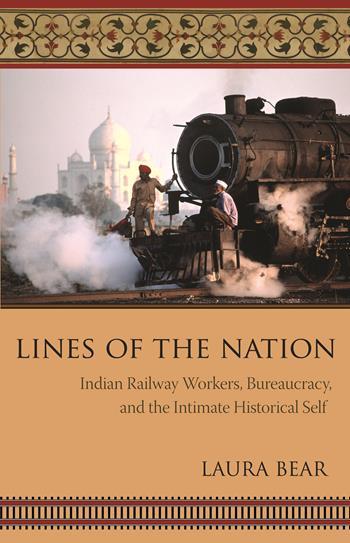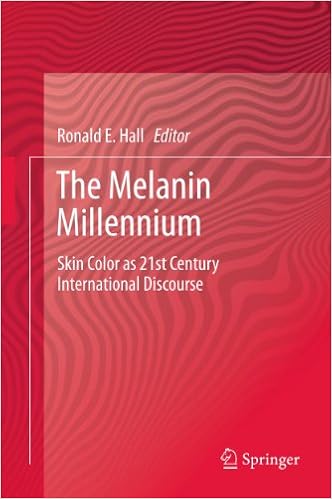Race, Religion and Law in Colonial India: Trials of an Interracial Family by Chandra Mallampalli (review) [Epstein]Posted in Articles, Asian Diaspora, Book/Video Reviews, History, Law, Media Archive on 2014-09-30 20:42Z by Steven |
Victorian Studies
Volume 56, Number 3, Spring 2014
pages 519-520
DOI: 10.1353/vic.2014.0064
James Epstein, Distinguished Professor of History
Vanderbilt University, Nashville, Tennessee
Mallampalli, Chandra, Race, Religion and Law in Colonial India: Trials of an Interracial Family (Cambridge, New York: Cambridge University Press, 2011)
The case of Abraham v. Abraham (1854–63) was extraordinary. It took nearly a decade to decide as it passed through the district civil court at Bellary in southern India, the appeals court at Madras, and finally the Privy Council’s Judicial Committee. The case repeatedly confounded legal categories based alternately on Hindu and English law and the fixed categories of Britain’s post-1857 colonial regime. In Race, Religion and Law in Colonial India, Chandra Mallampalli skillfully guides readers through the intricacies of the case, studying the social world inhabited by one family drawn into litigation and measuring the gap between their life-world and the protocols of the court. The period was one of imperial crisis and transition, as the British Crown assumed direct control over Indian territories following the 1857 Rebellion and authorities adopted a more cautious approach in governing Indian society. As the author writes, the more conservative turn of liberal governance “gave rise to an imperial multiculturalism, a policy of classifying colonial subjects according to race, religion, caste, or ethnicity,” while accentuating the difference between colonial subjects and colonizers (5).
Matthew Abraham was born into a Tamil-speaking family of “untouchables” (paraiyar community) who had converted to Catholicism. He subsequently converted to Protestantism and married Charlotte Fox, a Eurasian of Anglo-Portuguese descent. Matthew was part of the mobile group of camp followers who gravitated to the garrison town of Bellary. Access to the colonial culture centered on Bellary’s cantonment. The town’s thriving bazaar economy gave scope for Matthew’s enterprising talents and ambition; the locality’s social fluidity proved important to his self-fashioning. At the time of his marriage in 1820, he was working in the arsenal and selling military surplus items. Fairly soon he owned a distillery and most crucially was granted the East India Company contract to produce and supply liquor to the troops and local retailers—an irony, given his conversion to Evangelical Protestantism. The family prospered. Matthew assumed English customs and associated predominately with Europeans. He belonged to the class of doras, persons of local prominence, and was identified as an east Indian, a term usually reserved for those of mixed European and native blood. By a twist of fate, an oversight perhaps, the underlying complexities of this personal success story emerged in court records and now again in this fascinating book. Matthew died having left no will. His wife and his brother, Francis, who was involved in the family’s expanding business networks, fell out; they were unable to agree on a settlement or a legal heir, a necessary condition for their business dealings. From Matthew’s death in 1842 until Charlotte filed suit in 1854, the Abrahams “were a family in search of a law” (99). Once the case came to court, it produced a huge archive, with evidence taken from 271 witnesses and a series of conflicting verdicts.
In simplest terms, the case turned on whether Hindu or English law pertained. The Anglo-Indian system of civil or personal law mandated that Indians were governed according to their own laws whether Hindu or Muslim. As Mallampalli notes, a policy initially meant to promote religious tolerance also helped to create the fiction of coherent religious communities. The law seemed incapable of accommodating the intermingling of conditions and fluid identities that characterized the lives of the Abrahams. The legal agency of Charlotte and Francis depended on their ability to exploit the legal options open to them (in a sense, this is true of all legal proceedings). Hindu law worked to the advantage of male heirs. Charlotte and her legal councilors insisted that the family had been completely assimilated into the religion, customs, and lifestyle of Europeans and was therefore subject to English law with its emphasis on individual enterprise and ownership. Matthew’s brother was merely a business agent and subordinate family member. In contrast, Francis argued for continuity with Hindu tradition and his and Matthew’s undivided brotherhood, which would leave him as sole family heir. In this version, despite their Christian religion and European attitudes, the two brothers had been born into a class of persons who continued to observe the practice of Hindu…


